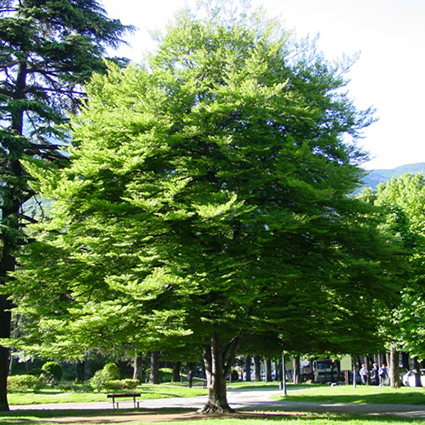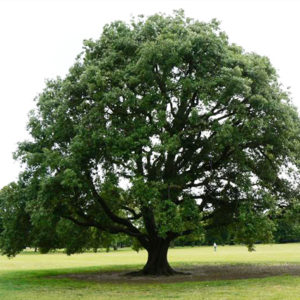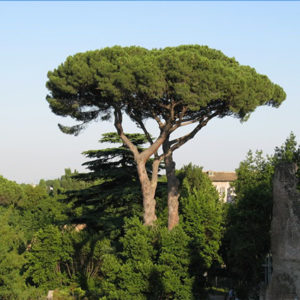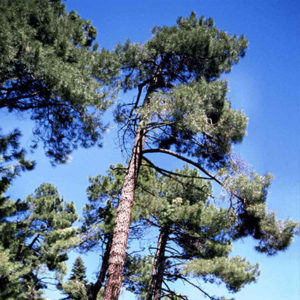Description
Fagus sylvatica is a large tree, capable of reaching heights of up to 50 m (160 ft) tall and 3 m (9.8 ft) trunk diameter, though more typically 25–35 m (82–115 ft) tall and up to 1.5 m (4.9 ft) trunk diameter. A 10-year-old sapling will stand about 4 m (13 ft) tall. It has a typical lifespan of 150–200 years, though sometimes up to 300 years. In cultivated forest stands trees are normally harvested at 80–120 years of age.
30 years are needed to attain full maturity (as compared to 40 for American beech). Like most trees, its form depends on the location: in forest areas, F. sylvatica grows to over 30 m (100 ft), with branches being high up on the trunk. In open locations, it will become much shorter (typically 15–24 m (50–80 ft)) and more massive.
Distribution: The natural range extends from southern Sweden to northern Sicily, west to France, southern England, northern Portugal, central Spain, and east to northwest Turkey, where it intergrades with the oriental beech (Fagus orientalis), which replaces it further east. In the Balkans, it shows some hybridisation with oriental beech; these hybrid trees are named Fagus × taurica Popl. [Fagus moesiaca (Domin, Maly) Czecz.]. In the southern part of its range around the Mediterranean, it grows only in mountain forests, at 600–1,800 m (1,969–5,906 ft) altitude.
Species: Fagus, European beech
Family: Fagaceae | Genus Fagus
Height: 40 – 50 m
Plant range: Europe to Caucasus
- Compesation timing: CO2 350Kg.
- CO2 Annual compensation: 7Kg / year.
- CO2 offset period: 0 anni 50 anni.
- Average natural life span: 400 anni.
Used for:
The beech has been used for its wood by man for thousands of years. The wood is white, or reddish if grown on acid soil, but fine grained, smooth and heavy when first cut. It may split as it dries. It is a good wood for making ornaments, tool handles, kitchen utensils, furniture and parts of buildings.








